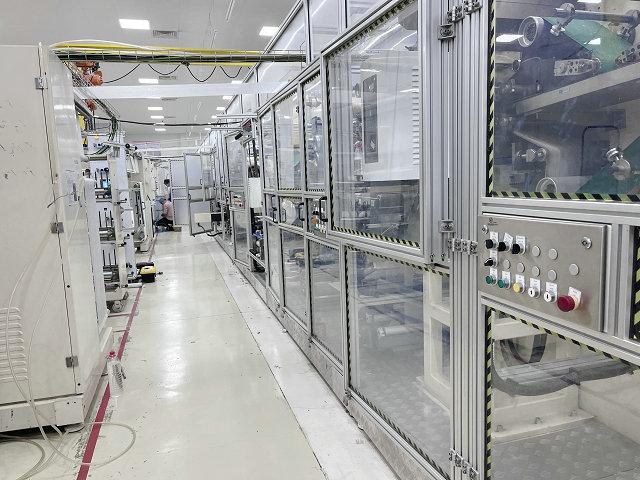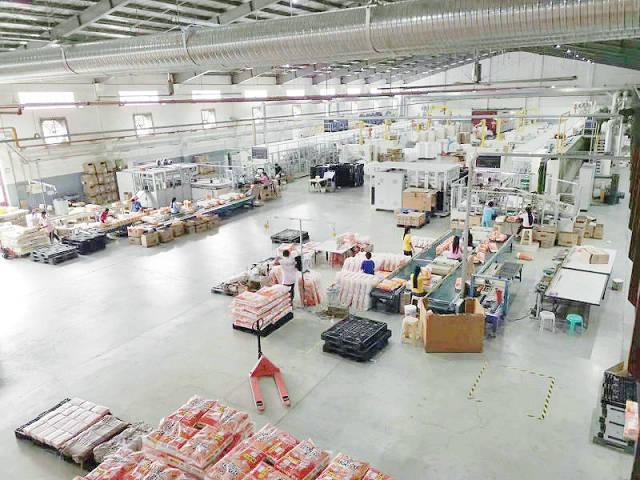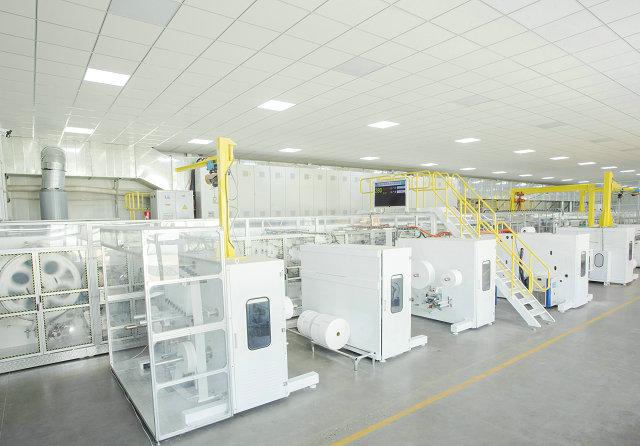Author:Haina Machinery Factory FROM:Diaper Machinery Manufacturer TIME:2024-11-15
In the modern manufacturing landscape, Sanitary Pads Machinery play a crucial role in producing essential hygiene products. As these machines are subjected to constant use, the need for spare parts becomes inevitable. This article delves into the accessibility of spare parts for sanitary pad machines, exploring various aspects such as sourcing, common issues, and the impact of maintenance on machine longevity. Understanding these factors can help manufacturers ensure smooth operations and minimize downtime.
Spare parts are vital for the efficient functioning of any machinery, including Sanitary Pads Machinery. These components ensure that machines operate at their optimal capacity, thereby maintaining production quality and efficiency. Regular wear and tear can lead to breakdowns, which can significantly disrupt production schedules. Having access to reliable spare parts is essential for any manufacturer looking to maintain consistent output and avoid costly delays.
Sourcing spare parts for Sanitary Pads Machinery can vary depending on the manufacturer and the machine's specifications. Many suppliers offer a range of spare parts, from basic components like belts and bearings to more specialized items such as sensors and control panels. Manufacturers often have preferred suppliers with whom they establish strong relationships to ensure timely delivery and support. Online marketplaces also provide a platform for finding spare parts, although the reliability of these sources can vary greatly.
One of the most reliable ways to obtain spare parts is through the original equipment manufacturer (OEM). OEMs not only provide genuine parts but also offer documentation that details specifications, installation procedures, and maintenance tips. This support can be invaluable, especially when it comes to complex components. Additionally, many OEMs have dedicated service teams that assist manufacturers in troubleshooting and resolving issues related to spare parts.
While sourcing spare parts may seem straightforward, manufacturers often face challenges. Lead times can be long, especially if parts need to be imported from overseas. Supply chain disruptions, fluctuating demand, and global events can further complicate the availability of spare parts. Moreover, counterfeit parts pose a significant risk, potentially leading to machine failures and safety hazards. Therefore, careful vetting of suppliers and parts is crucial to ensure quality and reliability.

To mitigate the need for frequent spare part replacements, implementing a preventive maintenance program is essential. Regular maintenance checks can identify potential issues before they escalate into major problems. This proactive approach not only extends the lifespan of the machine but also ensures that spare parts are only needed when absolutely necessary. Training personnel in proper operation and maintenance techniques can further enhance machine reliability and performance.

Manufacturers must weigh the options between repairing a broken component or upgrading to a newer model. Sometimes, investing in upgraded technology can lead to increased efficiency and reduced operational costs in the long run. However, this decision should be based on a thorough cost-benefit analysis. In some cases, sticking with repairs may be more economical, particularly for older machines where compatibility with new parts could be an issue.

The cost of spare parts can vary widely, influenced by factors such as brand, quality, and availability. While cheaper alternatives may be tempting, they may end up costing more due to frequent replacements and potential machine damage. Thus, investing in high-quality spare parts from reputable suppliers is advisable. Manufacturers should also consider budgeting for spare parts in their overall operational costs to ensure they can address any needs promptly.
The future of spare parts accessibility is likely to be shaped by advancements in technology. Digital platforms and mobile applications are emerging, allowing manufacturers to track inventory levels, place orders, and receive updates in real-time. Additionally, 3D printing technology is gaining traction, enabling manufacturers to produce certain spare parts on-demand, thus reducing lead times and inventory costs. As these technologies develop, manufacturers can expect to see enhanced efficiency in sourcing and replacing spare parts.
In conclusion, while obtaining spare parts for Sanitary Pads Machinery can present challenges, understanding the various avenues available for sourcing, along with proper maintenance practices, can greatly enhance accessibility. Manufacturers need to establish strong relationships with reliable suppliers, invest in preventive maintenance, and stay informed about technological advancements. By taking these steps, manufacturers can ensure that their operations run smoothly, minimizing downtime and maximizing production efficiency.
